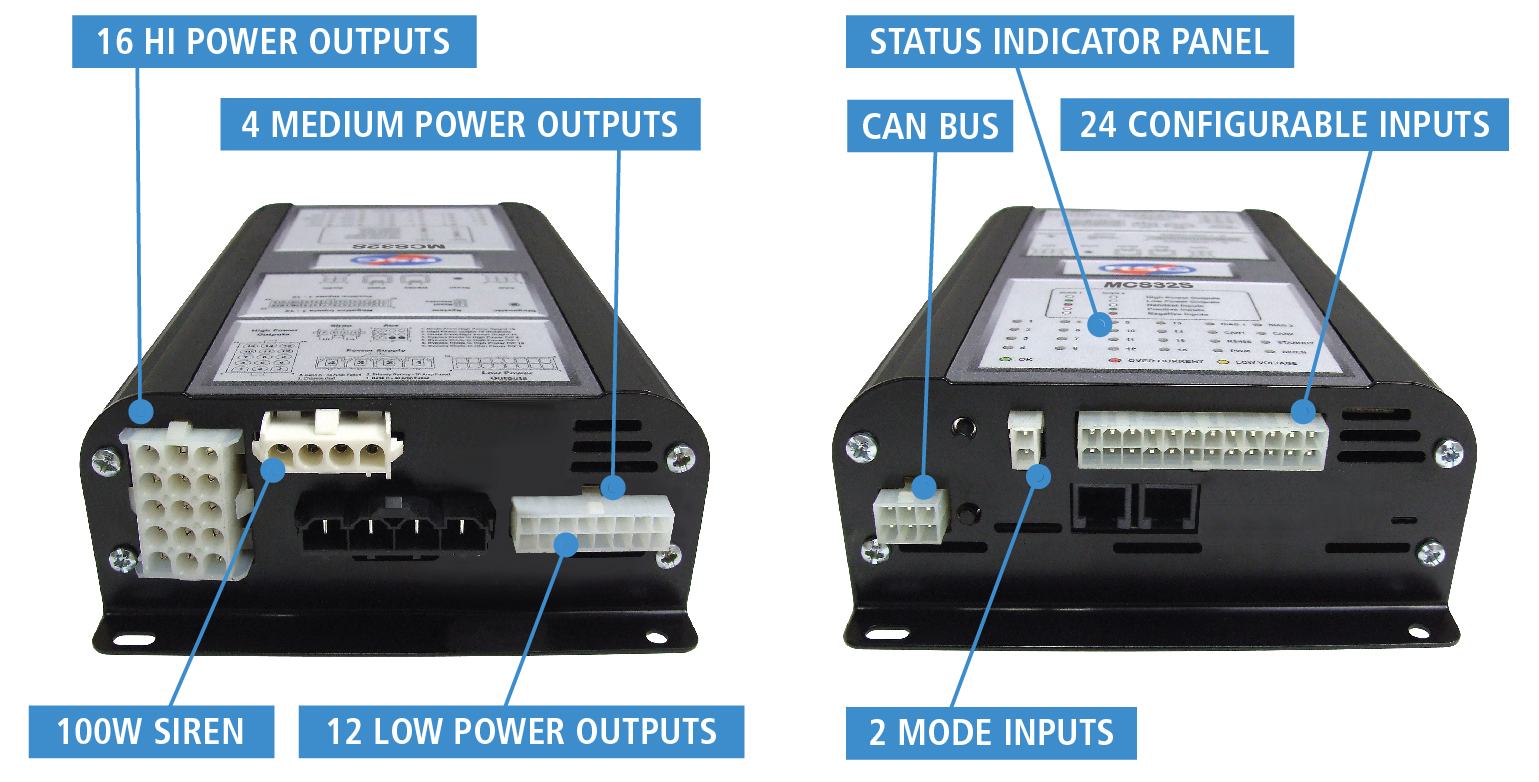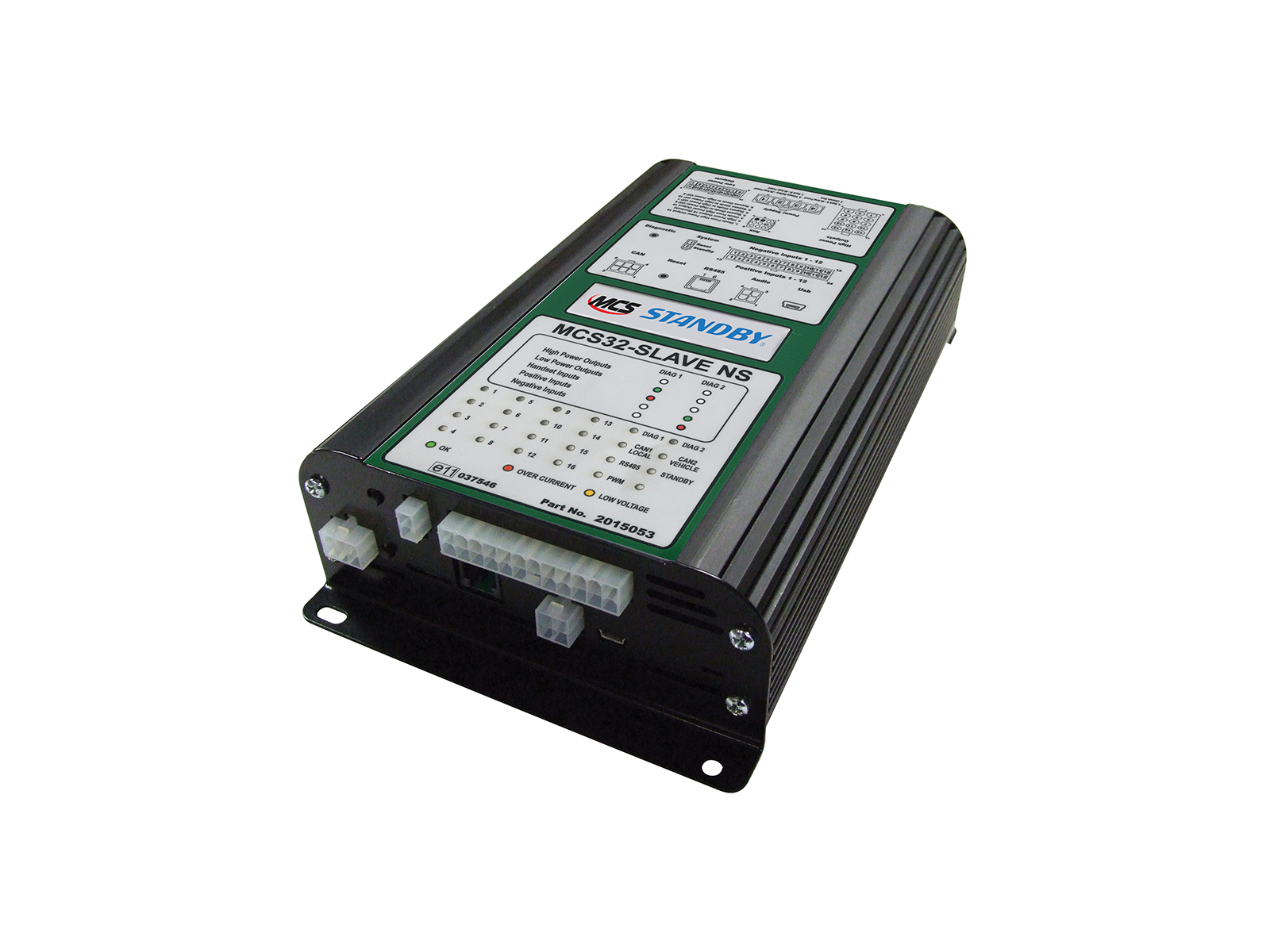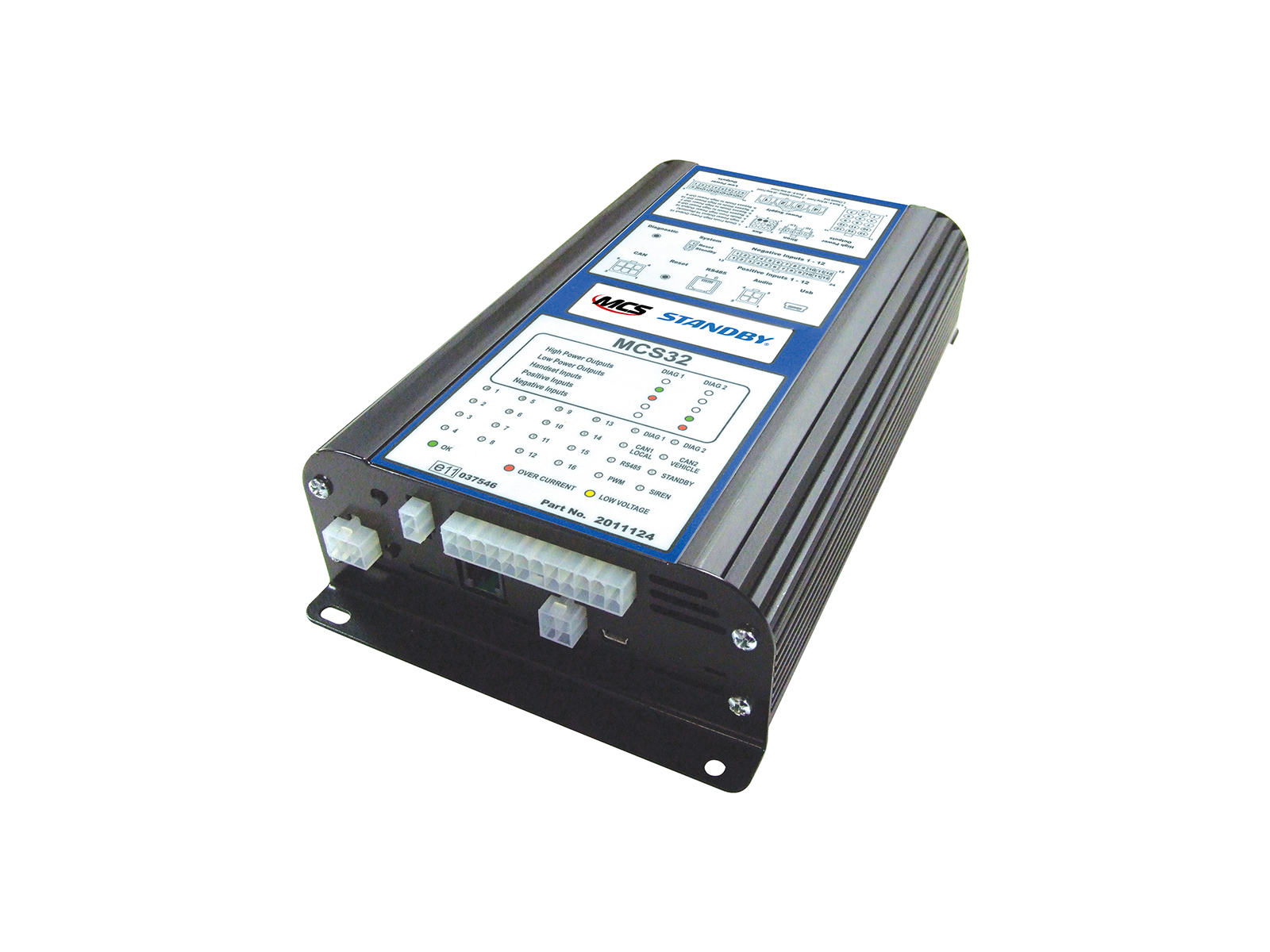The MCS-32S Extension Unit is effectively a duplicate of the standard MCS-32 Universal Controller, which would act as its Control Unit.
The Extension unit therefore replicates most of the Control Unit’s features and functions, but not all of them as this would not be practical to achieve when one device is subordinate to the other.
In brief the Extension unit has 32 outputs and 24 configurable inputs combined with siren functions.
The features not included in this device, because practically they can only be performed by the Control Unit are: Run Lock, Split Charging, Gateway Radio Controller, PA & Radio Re-broadcast and connection to the Audio Interface Controller.
Operation and monitoring of the MCS-32S Extension Unit is executed through a 2-Way proprietary CAN Bus data link with the Control Unit. Therefore as the Extension only accepts proprietary CAN there is no direct monitoring of vehicle CAN signals.
System Intelligence
Although the Extension unit has some self contained intelligence the control unit has overall command of the system. Also where as the control unit is supplied with pre-set-up standard default settings the Extension will effectively be supplied as a clean device and that would need programming via a dedicated USB port using the free complimentary PC software.
Human Machine Interface (HMI)
This will be exclusively via the control unit as the Extension has no facility to connect with our range of Multi Functional switch panels/handsets. However, discrete switches for Human Interface and/or Machine Trips can be connected into the relevant inputs if required.
One Source, One Solution
In order to simplify the installation process each MCS-32S Extension Unit is supplied fully loaded with all the necessary features and functions to implement a comprehensive system. Simply enable the required function via the ‘easy to use’ software.
Logic Functions
Like the Control Unit the Extension also contains an abundance of logic functions meaning complex applications are no longer difficult to implement, particularly where certain operations are interlinked with other functions. So performing ‘and/or’ functions and implementing ‘do this when’ or ‘stop this when’ are simple to apply together with the facility to alter functions allowing ‘end user’ requests to be simply implemented.
System Configuration
As with the Control units this is a simple 3-Stage process which entails enabling and labelling inputs and outputs, configuring the system operation and downloading the application onto the unit. This operation need only be done once, when completed it can simply be transferred onto other units via a laptop.



 Global Market
Global Market Sverige
Sverige Deutschland
Deutschland France
France Suomi
Suomi United Kingdom
United Kingdom

